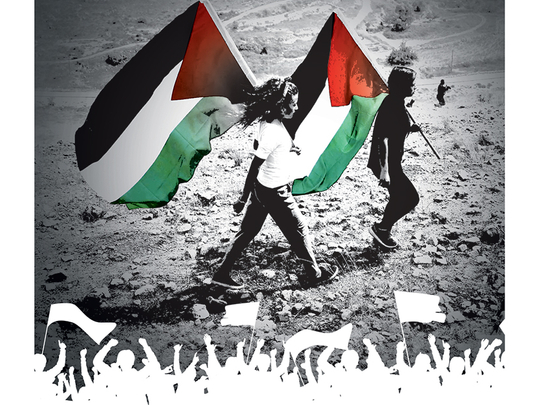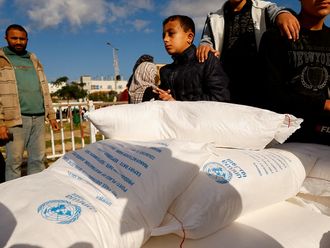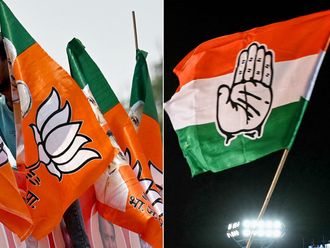
The beleaguered Gaza Strip, a proverbial thorn in Israel’s side for decades, had prompted the late Israeli prime minister, Yitzhak Rabin, to say in 1992: “I wish I could wake up one day and find that Gaza has sunk into the sea.”
More than ten years of a carefully managed economic blockade that produced an ongoing humanitarian crisis for almost two million Palestinians living on the 365 square kilometre strip of land, Gaza, the largest concentration camp in the world, has become Israel’s biggest nightmare.
Over the past decade, Israel has launched two massive military operations against Gaza in addition to hundreds of air strikes and cross-border shelling that claimed the lives of thousands of mainly civilian victims, including women and children. The military has targeted hospitals, schools, residential buildings and Gaza’s only power station. It has razed agricultural lands, destroyed workshops and factories and denied import of essential goods, including cement and medicines. Journalists, doctors, paramedics, fishermen, policemen and even the handicapped have not been spared. And yet Gaza has not sunk into the sea.
Needless to say that, over the years, human rights organisations compiled massive evidence of war crimes and crimes against humanity committed by Israeli military. But not a single charge has been made against Israel. Its actions in Gaza, including the land, air and sea blockade continue to claim lives on almost a daily basis. United Nations reports continue to warn that the environmental reality in Gaza has made life difficult. Economically, more than 60 per cent of Gazans are unemployed and around 80 per cent are dependent on United Nations Relief and Works Agency’s (UNRWA) food handout. The vast majority of Gazans are refugees who have been displaced for generations.
This may explain why thousands of Gazans, mostly young men and women, have responded to calls to organise peaceful, non-violent protests along the borders with Israel as part of the Great March of Return. Gaza’s defiance despite unbelievable hardship may explain, but not justify, Israel’s extreme response and intolerance to these uniquely peaceful events.
Israel cannot afford to shift the world’s focus from the threat of Hamas and terrorism to the powerful images of unarmed civilian youth hosting the Palestinian flag and saluting their ancestral land. It has decided to adopt harsh measures; killing Palestinians in cold blood and in front of the world’s media rather than allow this phenomenon to endure. So far the toll has been high: Tens of Palestinians, including a child and a journalist, killed and over 2,000 injured, since the protests started on March 30, marking the 42 anniversary of Land Day.
But despite Israeli warnings and justifications, its image has been tarnished and not for the first time. The premeditated murders have elicited criticism and condemnations from foreign governments, international organisations and private citizens, including Israelis. The United States found itself alone, twice within two weeks, in preventing the UN Security Council from even issuing a statement on the Gaza carnage or allowing an inquiry.
On Twitter, Facebook and other social media platforms people posted images of brave Gazan youths challenging well-entrenched and heavily-armed Israeli soldiers along the barren borders. And despite harrowing scenes of unarmed Gazans being shot at, some in the back, there were iconic images of defiance and bravery. It was difficult not to notice the stark contrast and the deep symbolism in these events.
No one has used of the word “intifada” or uprising to describe what was happening in Gaza. The emphasis on non-violence is what marked the phenomenon thus far. And this time, it was Palestinian youth who took the initiative because it was they who had the most to lose. Israel has sowed despair and hopelessness over many years, and now it is reaping the bitter harvest of its nefarious policies. This is the generation that Israel has deprived of everything and it is no wonder that it now finds them in the forefront of the protests; willing to die for their dream.
Israel cannot afford to let this image of Palestinians as victims resurface after it had invested years in demonising them. This is why it is responding with such ferocious force in the hope that it will intimidate them. This is unlikely to happen. We will see such despair turn into a positive power of rebelliousness and heroism across the occupied lands as we approach the May 15 deadline. Palestinian youth will make sure to ruin Israel’s 70th independence celebrations through massive peaceful and non-violent protests.
And this is one confrontation where Israel’s mighty military machine is being neutralised. Its air force and tanks can do nothing to stem the flow of Palestinian protesters. President Mahmoud Abbas and Palestinian factions should step aside and allow a new generation of their people to take the lead. Gaza has shown time and again that it is willing to do so and willingly pay the price. Non-violence should become the Palestinians’ only weapon at this crucial stage of their decades-old struggle.
Osama Al Sharif is a journalist and political commentator based in Amman.









